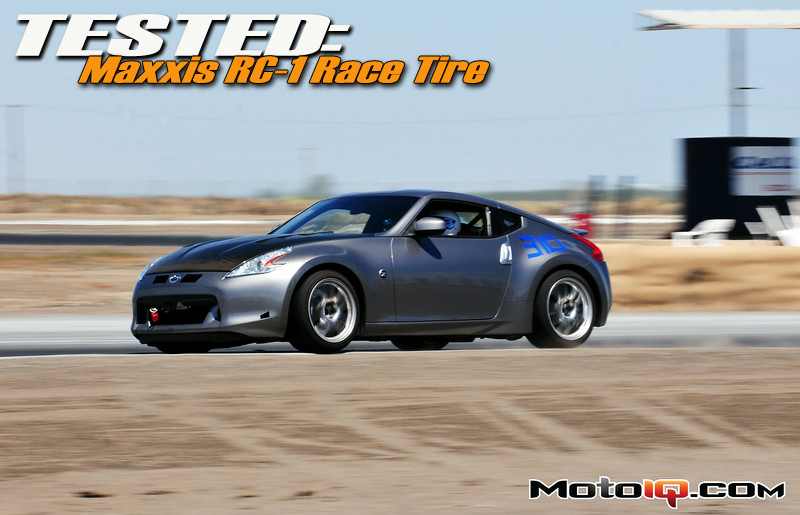
Maxxis RC-1 Race Tire: The Prolonged Review
Maxxis has been in the tire game for a long while, but only recently have they jumped into the road race DOT R-compound market with the RC-1. The goal for the tire was to be an all-around performer as well as being durable and affordable. Such characteristics will appeal to all crowds of motorsports whether it is wheel to wheel racing, time attack, or HPDE (high performance driving event) “track days”. The size availability covers a lot of the more popular ranges, with some niche sizes that will be out shortly. The test vehicle was my own project 370Z, which represents a street car that gets tracked often being the norm for the majority of HPDE attendees. Project 370Z is a full weight, relatively softly sprung, daily driven car. So the RC-1’s had their work cut out for them in the wear and heat cycling capacity department. Also, Project 370Z is driven to and from the track on the tires it uses for the event since I have only one set of wheels for the car. So I have to get the tires mounted the day before I leave for events and changed back after the weekend which is a scenario that a significant amount of track day goers deal with regularly.
 Simplicity is the initial reaction to the look of the RC-1. Not much to see when it comes to tread design, just a simple DOT legal 2 line void area and a shallow imprint “Maxxis” along the circumference of the middle tread block.
Simplicity is the initial reaction to the look of the RC-1. Not much to see when it comes to tread design, just a simple DOT legal 2 line void area and a shallow imprint “Maxxis” along the circumference of the middle tread block.
Upon closer inspection, you'll notice the slight chamfer on the inner side of the two DOT lines, making it a slightly larger void area than softer compound 40 UTQG treadwear tires. This difference is minimal, but noticeable to the experienced eye. Also present and similar to most race oriented tires are tread depth indentations to help monitor the wear pattern across the contact patch.
 The “tread” seems to wrap around the top edge of the sidewall significantly further than most track oriented street tires and R-Compounds I have seen on the market and in the past. This may be beneficial for closer to stock cars with minimal static camber adjustment or strut suspension cars with less than ideal camber curve dynamics under compression.
The “tread” seems to wrap around the top edge of the sidewall significantly further than most track oriented street tires and R-Compounds I have seen on the market and in the past. This may be beneficial for closer to stock cars with minimal static camber adjustment or strut suspension cars with less than ideal camber curve dynamics under compression. 275/35/18 was the largest size currently available for 18 inch wheels. For Project 370Z, this is a tad narrow and small in diameter, but is very popular among other platforms that see track use. Hopefully larger sizes like 285/35/19, 295/35/18, or even 305/30/18 to better accommodate larger and more powerful cars will come out. Any one of those sizes would be perfect for Project 370Z.
275/35/18 was the largest size currently available for 18 inch wheels. For Project 370Z, this is a tad narrow and small in diameter, but is very popular among other platforms that see track use. Hopefully larger sizes like 285/35/19, 295/35/18, or even 305/30/18 to better accommodate larger and more powerful cars will come out. Any one of those sizes would be perfect for Project 370Z.


